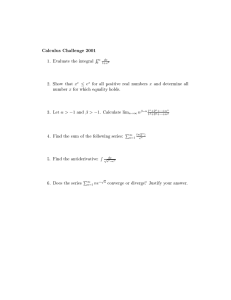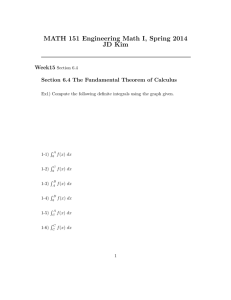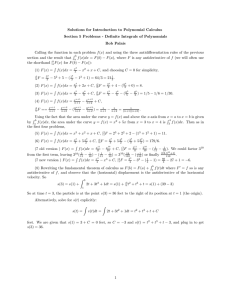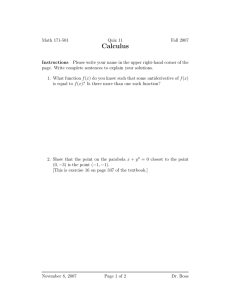Document 13555030
advertisement
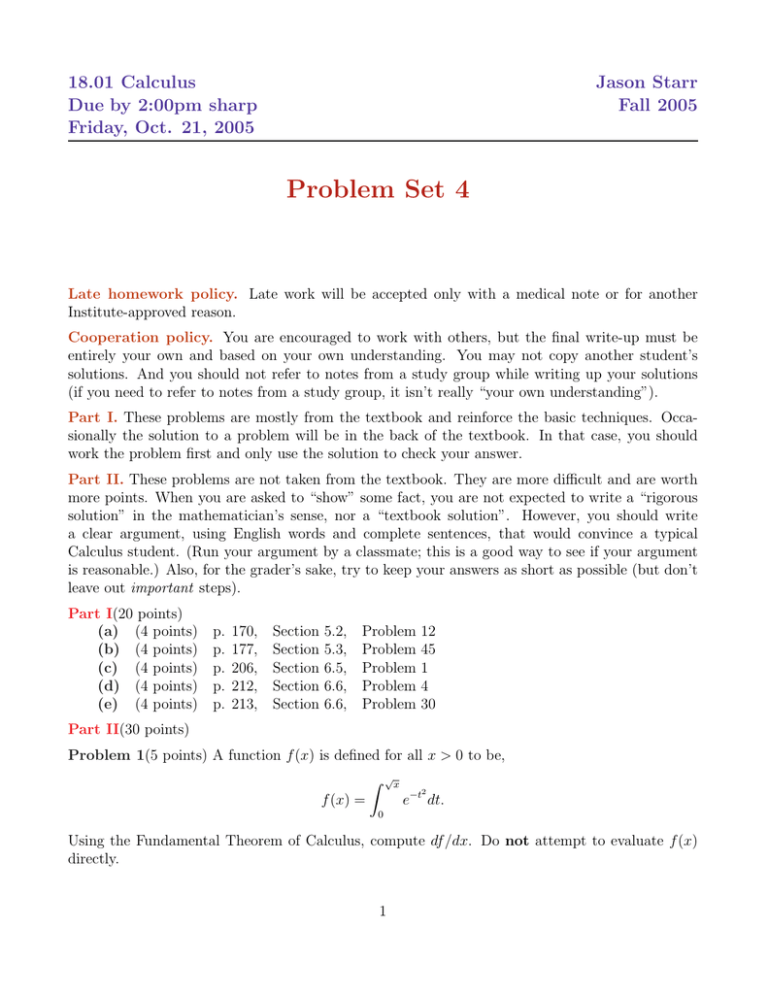
18.01 Calculus Due by 2:00pm sharp Friday, Oct. 21, 2005 Jason Starr Fall 2005 Problem Set 4 Late homework policy. Late work will be accepted only with a medical note or for another Institute­approved reason. Cooperation policy. You are encouraged to work with others, but the final write­up must be entirely your own and based on your own understanding. You may not copy another student’s solutions. And you should not refer to notes from a study group while writing up your solutions (if you need to refer to notes from a study group, it isn’t really “your own understanding”). Part I. These problems are mostly from the textbook and reinforce the basic techniques. Occa­ sionally the solution to a problem will be in the back of the textbook. In that case, you should work the problem first and only use the solution to check your answer. Part II. These problems are not taken from the textbook. They are more difficult and are worth more points. When you are asked to “show” some fact, you are not expected to write a “rigorous solution” in the mathematician’s sense, nor a “textbook solution”. However, you should write a clear argument, using English words and complete sentences, that would convince a typical Calculus student. (Run your argument by a classmate; this is a good way to see if your argument is reasonable.) Also, for the grader’s sake, try to keep your answers as short as possible (but don’t leave out important steps). Part I(20 points) (a) (4 points) (b) (4 points) (c) (4 points) (d) (4 points) (e) (4 points) p. p. p. p. p. 170, 177, 206, 212, 213, Section Section Section Section Section 5.2, 5.3, 6.5, 6.6, 6.6, Problem Problem Problem Problem Problem 12 45 1 4 30 Part II(30 points) Problem 1(5 points) A function f (x) is defined for all x > 0 to be, √ � x 2 e−t dt. f (x) = 0 Using the Fundamental Theorem of Calculus, compute df /dx. Do not attempt to evaluate f (x) directly. 1 18.01 Calculus Due by 2:00pm sharp Friday, Oct. 21, 2005 Jason Starr Fall 2005 Problem 2(10 points) Using the definition of the Riemann integral, upper sums, and the formulas for special sums in the textbook, compute that � a 4a3 , (a − x)(a + x)dx = 3 −a for all a > 0. Problem 3(15 points) This problem is a special case of a more general method for computing antiderivatives that will be developed systematically later in the semester. � a b + u−1 , where (a)(10 points) Compute the antiderivative 1−1u2 du as follows. Consider the sum u+1 a and b are unspecified constants, and clear denominators. Find a choice of a and b so the sum 1 a b simplifies to 1−1u2 . Now replace 1−u 2 in the integrand by your expression u+1 + u−1 . Use ln(u + 1), ln(u − 1) to compute the antiderivative. � 1 (b)(5 points) Reduce the computation of the antiderivative cos(x) dx to (a) by multiplying numer­ ator and denominator of the integrand by cos(x), using the trig identity (sin(x))2 + (cos(x))2 = 1 and substituting u = sin(x). Don’t forget to back­substitute. Also, say for what range of x your antiderivative is valid (ln(y) isn’t defined if y is negative!). 2
